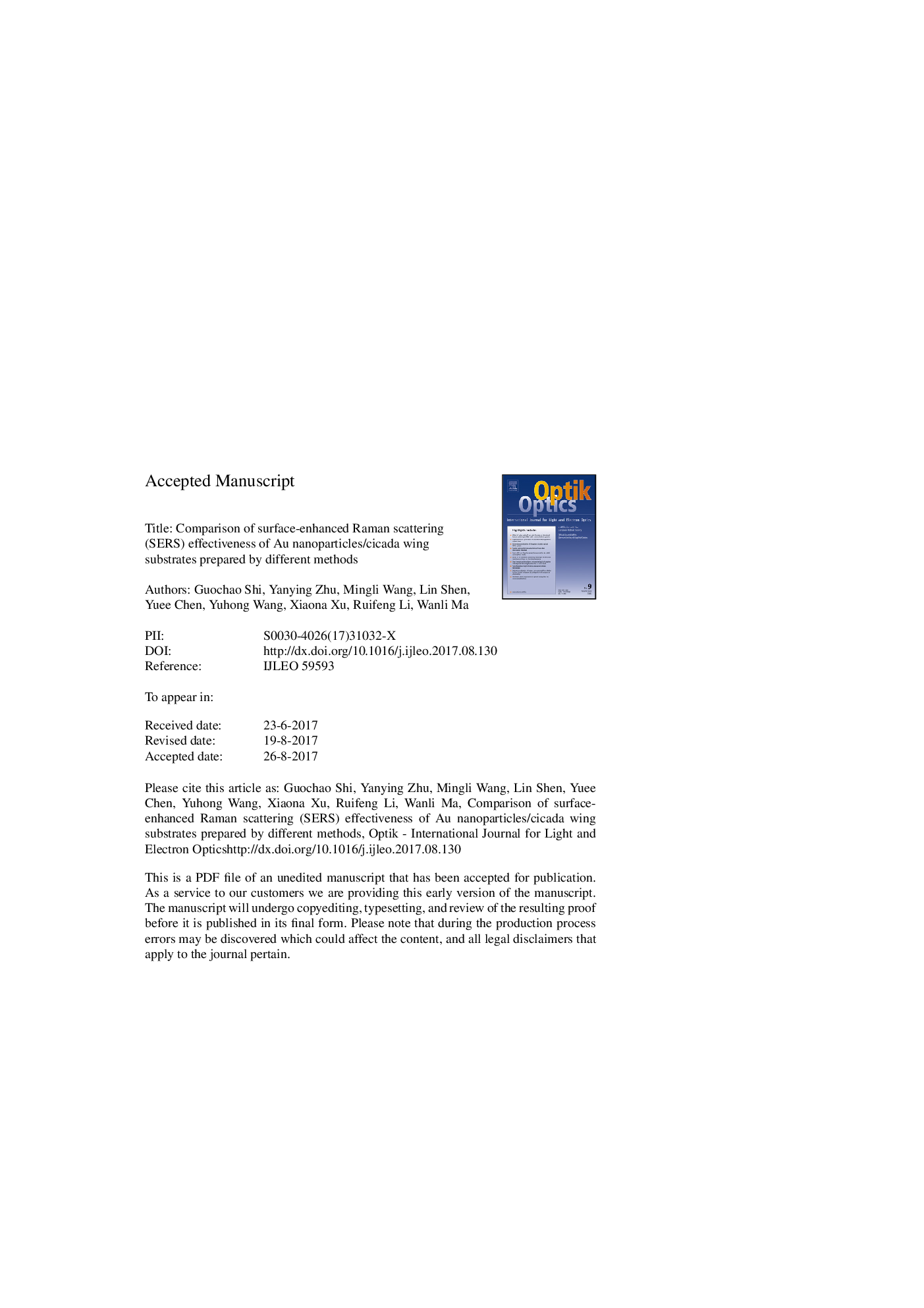| Article ID | Journal | Published Year | Pages | File Type |
|---|---|---|---|---|
| 5025081 | Optik - International Journal for Light and Electron Optics | 2017 | 15 Pages |
Abstract
Two different types of Au nanoparticles (Au)/cicada wing (CW) arrays were synthesized by chemical reduction impregnation method and magnetron sputtering technique, respectively. And three-dimensional (3D) Au/CW-c (prepared by chemical reduction impregnation method) arrays and Au/CW-m (prepared by DC magnetron sputtering system) substrate were used as active substrates for SERS. The morphologies and Raman signals of the synthesized Au/CW-c and Au/CW-m substrates were characterized by field emission scanning electron microscopy (FE-SEM) and Raman system. Characterizations of the synthesized Au/CW-c and Au/CW-m substrates exhibited outstanding SERS properties. By comparing the enhanced Raman signal of Rhodamine 6G (R6G), it was found that the Au/CW-m substrate was more sensitive than Au/CW-c substrate. The results showed that the limit of detection (LOD) for R6G was as low as 10â8Â M for the Au/CW-m substrate. The enhancement factors (EF) were calculated to be 5.09Â ÃÂ 104 for the Au/CW-c substrate and 1.12Â ÃÂ 106 for the Au/CW-m substrate. This phenomenon is due to the fact that the high-dense SERS “hot spots” where the collective resonance of the absorbed electrons enhances contribute to the high SERS enhancement of Au/CW-m substrate. What we have found provides a promising approach to the rapid and sensitive detection of trace of organic pollutants.
Related Topics
Physical Sciences and Engineering
Engineering
Engineering (General)
Authors
Guochao Shi, Yanying Zhu, Mingli Wang, Lin Shen, Yuee Chen, Yuhong Wang, Xiaona Xu, Ruifeng Li, Wanli Ma,
